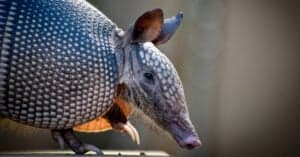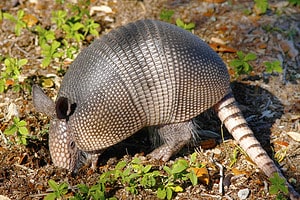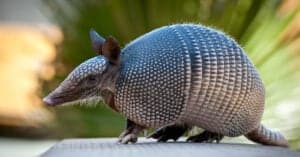Armadillos are unique and fascinating creatures. Interestingly, one of its species, the La Plata three-banded armadillo, can roll into a ball when under attack. These animals are notorious for their digging activities which is usually a major problem with garden owners.
Perhaps there’s an animal scavenging your garden and you suspect that it’s an armadillo but you are not absolutely sure. Fortunately, if the animal leaves its poop behind, you can use that to identify the culprit. However, that might be difficult if you don’t know what the digestive waste of these mammals looks like.
Here is a comprehensive guide that tells you everything you ever wanted to know about armadillo poop.
What Does Armadillo Poop Look Like?

Armadillo poop drops in small pellets.
©Heiko Kiera/Shutterstock.com
Under normal and healthy conditions, armadillo poop is shaped as a circle, although the circles are not perfect. These feces drop in small numerous pellets and each poop averages about one inch long.
However, armadillo poop does not have a smooth texture or uniform color. The color and texture of their poop usually depends on what they eat. What does this mean? For most animals, including humans, the texture and color of poop often have a smooth texture and unique color.
Generally, poop is the end product of food that has gone through a complete digestive process. So, when most animals eat, organs involved in the digestive process grind the food and break it down, thereby making it easier to digest. And when the end product, which is the waste, eventually comes out as poop, it usually has a smooth texture.
But this is not the case for armadillos. Armadillo poop often contains the undigested part of animals they have eaten. So, it’s possible to find insects in their digestive waste if their diet primarily consists of insects. However, if their diet primarily consists of leaves, there will be bits of leaves in their poop to make it apparent.
Another significant component of the animal’s poop is dirt. A typical armadillo tends to consume soil when eating its food. Interestingly, soil passes through the digestive organs and comes out as part of its droppings at the other end.
The bottom line is that the digestive waste of armadillos does not have an actual color due to the different components that seem to make it up. So, color is not a good criterion for identifying their feces.
Where Can You Find Armadillo Poop?
It’s not as difficult as it seems to find armadillo poop. While many might be focused on using the look to find the scat, the smell is perhaps the most striking feature of armadillo poop. The smell is a distinct nasty smell that spreads through the farm. With the scent, you can narrow your search to a particular side of the garden.
Moreover, there is a standard theory that armadillos are one of the few animals that bury their poop. While this is not confirmed to be accurate, some striking habits can help explain the reason for this theory. For instance, armadillos are commonly known for their digging activities. They dig pits mostly when they are in search of food.
One of their favorite foods, insect larva, hides inside the soil. So they use their excellent ability to dig holes and pits to easily find insect larvae to eat. Interestingly, these frequent eaters tend to excrete at the spot where they eat. This is why it is possible to find their droppings in pits.
But that is not all. An armadillo’s digging is not always for finding food. They also dig to hide away from humans and other animals. So if you find poop scattered across the soil in a ditch or very near, there is every chance it is from these shy animals. But what is the best reaction when you find this animal’s droppings?
Is Armadillo Poop Toxic?
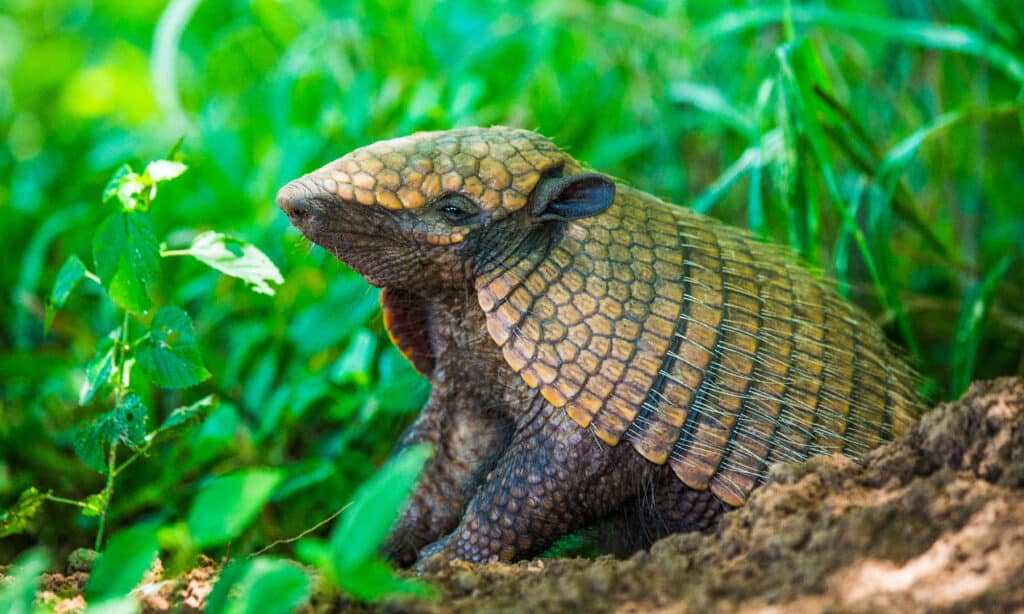
Armadillo poop can pass diseases to humans, so contact with it is not advised.
©mariamalaya/Shutterstock.com
Ideally, staying away from an armadillo is best if you find one. Likewise, keeping away from their poop is crucial. One of the many incredible facts about the armadillo is that they are susceptible to human diseases. They can get diseases from infected humans they come in contact with.
Likewise, these shy creatures can pass infections to humans, especially through their poop. Armadillos’ digestive waste can carry different diseases they come in contact with. One typical example is leprosy. They can transmit other types of infections too, however, leprosy seems to be the most common in tested samples of armadillo’s scat.
Their low body temperature is one of the major reasons for their high susceptibility to leprosy. And once these animals have the disease, their feces becomes an infecting agent. Although the percentage of armadillos with leprosy in your area might be small, it is best to avoid the poop just to be safe.
How To Get Rid of Armadillo Poop?
To get rid of armadillo poop in your garden, wear gloves, pick up the scat and dispose of it in a trash bag. Ensure that you tie it up properly before you empty it in the trash can. Wash your hands properly with soap as soon as you are done.
However, the best option is to get rid of the animal itself. Because their scats are unhealthy, ignoring the animal and disposing of their digestive waste is not enough to keep you and your family safe. If you have a severe infestation of these mammals in your yard, they will continue to litter the farm with droppings that could carry infections.
Also, remember that the animal is dangerous with claws, so it’s not advisable to confront them if you come across one. It is best to contact animal control to help with the removal.
What Do Armadillos Eat?
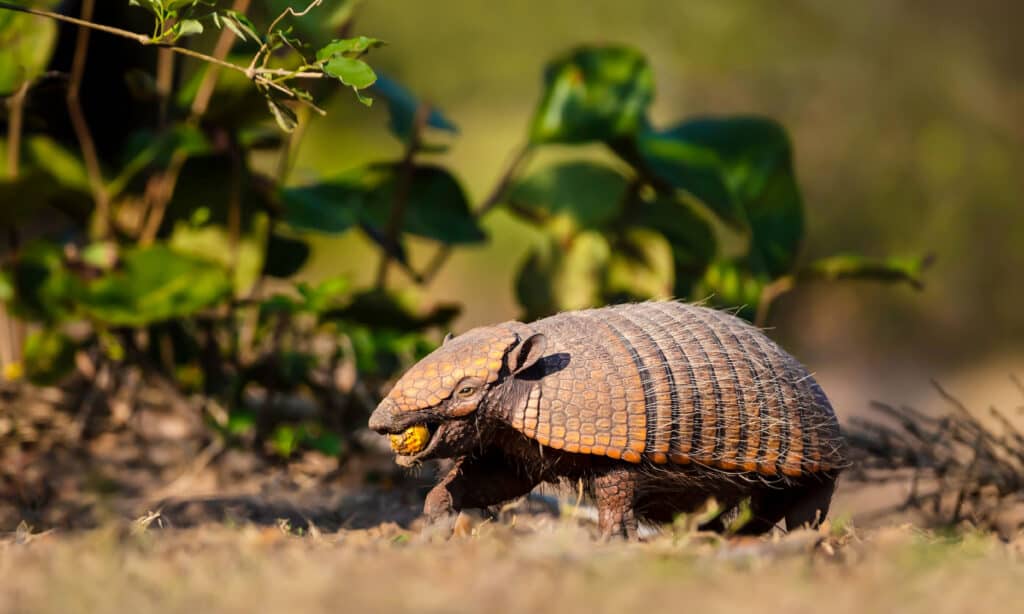
The diet of an armadillo includes bugs and butterflies.
©Giedriius/Shutterstock.com
Armadillos are omnivores, which means their diet ranges from leaves, young plant stems to insects. Typically, they prefer insects and larvae of developing insects. However, they equally eat leaves when it is available.
Their diet includes bugs, butterflies, and other little flying creatures. Their ability to jump up is helpful when hunting for this animal. They also eat pretty frequently and can do extensive damage to your garden.
The photo featured at the top of this post is © mariamalaya/Shutterstock.com
Thank you for reading! Have some feedback for us? Contact the AZ Animals editorial team.



